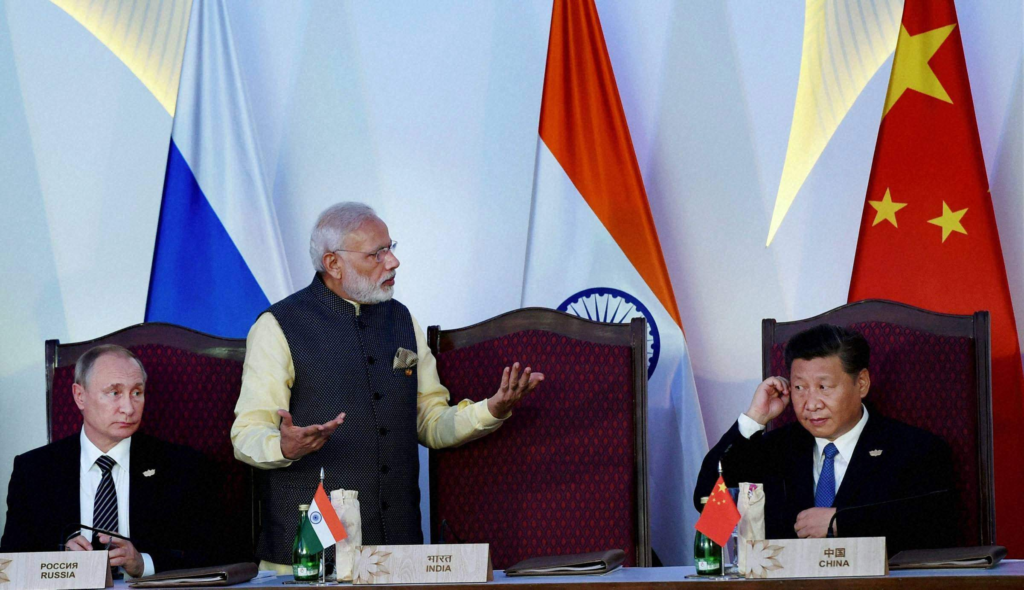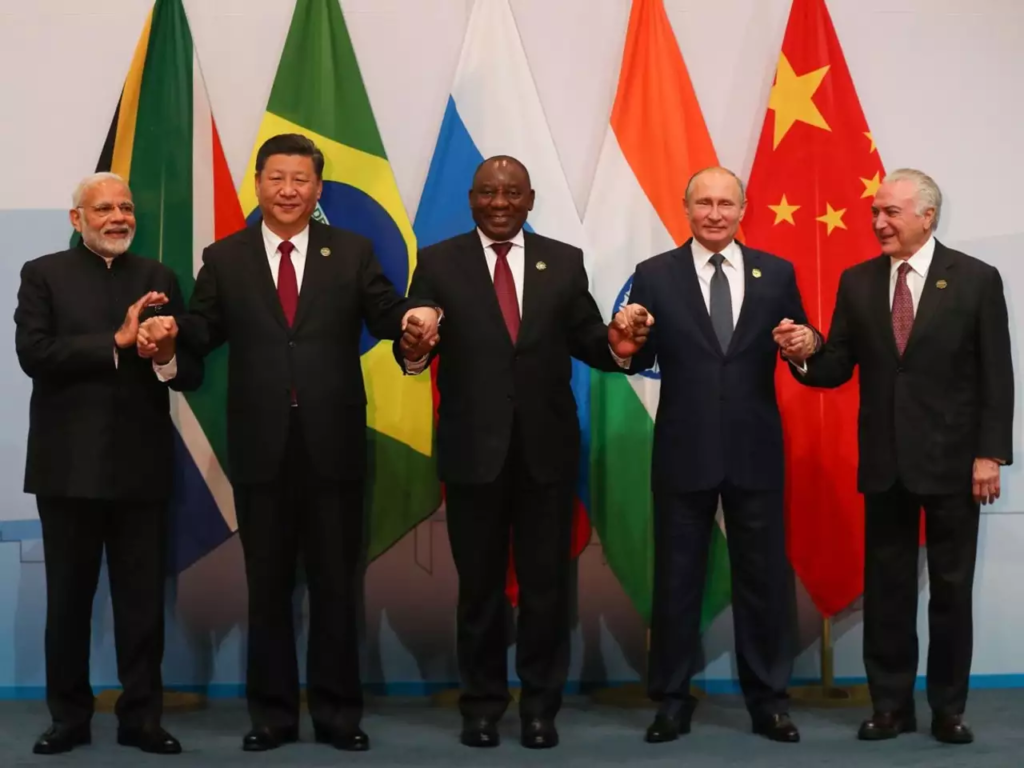Although the phrase “New Eurasia” has been used in a variety of settings, it typically connotes the notion of a new political, economic, or cultural alignment in the Eurasia area.
This can refer to concepts like the resurgence of Russia as a major force in the region, the unification of different nations into a single economic and political entity, or the rise of fresh cultural or ideological currents in the area.
The notion of a “Eurasian Union” made up of former Soviet countries is frequently linked to the idea of New Eurasia. However, based on the situation in which it is used, the term’s meaning and application may change.
What is Asia and Europe’s Changing Geopolitics?

In the upcoming period, China’s security threats to India’s Himalayan border and India’s continental strategy will grow more serious.
o On the other hand, there has never been a better opportunity to increase India’s geopolitical skills in collaboration with the US, Europe, Japan, South Korea, and Australia.
Japan is committed to forging robust defense alliances with Europe. Japan prioritizes the stability of both Europe and the Indo-Pacific region.
2 South Korea is also getting involved, increasing its visibility in Europe. For instance, it sells significant armament systems in Poland.
Australia is similarly keen to include Europe in the Indo-Pacific and has joined the US and UK in the AUKUS agreement.
Together, Japan, South Korea, and Australia are closing the gap between Asia and Europe, which were previously considered to be distinct geographic regions. Moreover, the alliance between Asia and Europe has grown as a result of Russia’s conflict in Ukraine and the alliance between China and Russia.
What are the Problems with Eurasia Emerging?

Increasing Economic Influence of Nations: One significant change has been the rise in political and economic clout of nations like China and Russia.
• China’s Belt and Road Initiative, a
massive infrastructure project
spanning multiple countries,
has allowed the country to expand its
economic influence and secure access
to natural resources.
• Russia, meanwhile, has used its energy
resources to gain leverage in the region
and assert itself as a major player in
international affairs.
▪ Increasing Tensions between Various Countries:
3 o For instance, the ongoing war in Syria has strained ties between the United States and other nations in the area and broken down ties between Turkey and Russia.
Political shifts: o Regional political shifts like Brexit and the emergence of nationalist parties in Europe,
have an effect on Eurasia’s processes as well.
o According to some experts, these adjustments might cause a change in the regional power dynamics, which could have an impact on commerce and foreign relations.
What effects will the emergence of the New Eurasia have on India?

It is more difficult to strike a balance between maritime and continental powers: o Previously, India could readily work with the maritime coalition (the Quad in the IndoPacific) and coexist with the continental coalition headed by Russia and China.
However, India will face difficulties in managing its relations with these nations due to the war between the US, Europe, Japan, and China on the one hand, and Russia and China on the other.
Security threats from China include: o China’s geopolitical ambitions and military buildup in the Himalayas, which have heightened hostilities between the two nations.
o Concerns about China’s capacity to project influence in the strategic Indian Ocean area, where it has seen economic and military success, have also arisen.
o In addition, worries about encirclement and possible security threats to India have been raised as a result of China’s expanding power in nearby nations through the Belt and Road Initiative.
Cooperation between China and Russia could tip the scales of power in the area in China and Russia’s advantage, which would be detrimental to India’s security and strategic interests.
A further threat to India’s position in the area could come from greater military and economic collaboration between China and Russia as a result of their increasing cooperation.
o In addition, China and Russia may oppose India collectively on important issues like UN missions, regional security, and counterterrorism due to their close ties, which would restrict India’s ability to promote its own interests internationally.
How can India safeguard its interests as a new Eurasia takes shape?
Building Stronger Economic Ties: In order to generate alternative opportunities for trade and investment, India should strive to improve its economic ties with other nations in the area, especially with those that do not take part in the Belt and Road Initiative.
▪ Diplomatic Engagement:
o India should engage in diplomatic efforts to
build stronger relationships with other countries
in the region, in order to counterbalance China
and Russia’s growing influence.
• This could include building stronger
ties with the US, Japan and other
countries in the region.
Military Cooperation:
o India should strengthen its military cooperation
with other countries in the region, particularly
with those that share its concerns about China’s
territorial claims and military expansion.
▪ Maintaining Strategic Autonomy:
o India should maintain its strategic autonomy by
avoiding being drawn into aligning with any
specific bloc or power structure.
▪ Investing in Domestic Production:
o India should focus on investing in domestic
production and technology to reduce
6
dependency on imports and enhance selfreliance in critical areas.
What should the next step be?
Ensuring Continental and Maritime Interests:
o It is quite clear India will not have the luxury of
choosing one over the other, it would need to
acquire strategic vision and deploy the
necessary resources to pursue its continental
interests without ignoring the interests in the
maritime domain.
• This will require a more assertive push
for the continental rights (transit and
access), working with the partners in
Central Asia, with Iran and Russia and a
more proactive engagement with
economic and security agendas
ranging from the Shanghai
Cooperation Organisation
(SCO), Eurasian Economic Union
(EAEU) and the Collective Security
Treaty Organization (CSTO)
Centrality of the Central Asian states:
o China strives to secure long-term strategic
gains on continental Eurasia, but its maritime
expansionist gains are relatively easier to
reverse.
• Like the Association of Southeast
Asian Nations (ASEAN) centrality is key
to the Indo-Pacific, centrality of the
Central Asian states should be key for
Eurasia.
7 o India should concentrate on forging close economic and diplomatic relations with the Central Asian states, which may entail boosting regional trade and investment as well as encouraging cross-cultural dialogue and cooperation on security-related problems.
Expanding Economic and Trade Relationships: India can also work to strengthen its trade and economic ties with nations in the area through projects like the Chabahar port project and the International North-South Transport Corridor.
